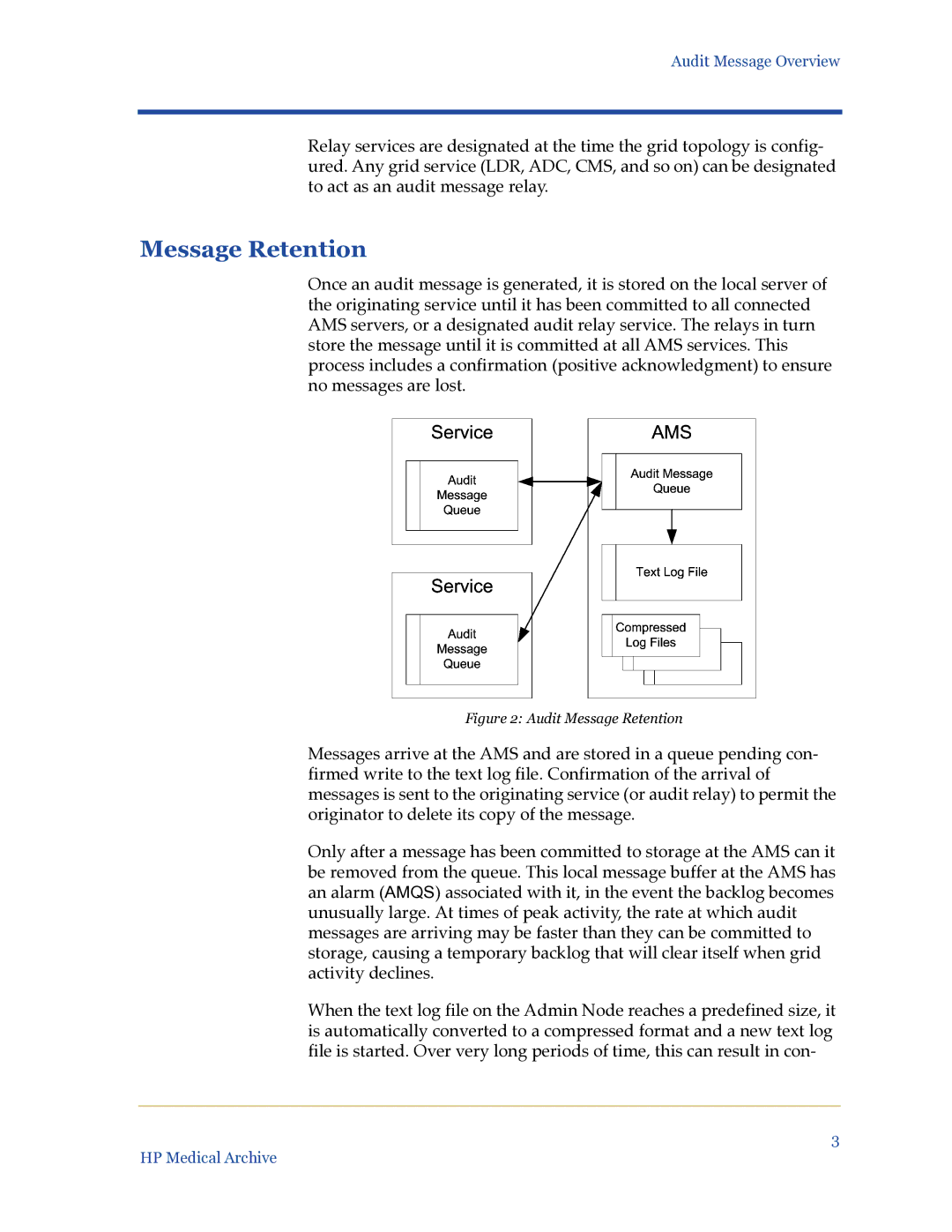
Audit Message Overview
Relay services are designated at the time the grid topology is config- ured. Any grid service (LDR, ADC, CMS, and so on) can be designated to act as an audit message relay.
Message Retention
Once an audit message is generated, it is stored on the local server of the originating service until it has been committed to all connected AMS servers, or a designated audit relay service. The relays in turn store the message until it is committed at all AMS services. This process includes a confirmation (positive acknowledgment) to ensure no messages are lost.
Figure 2: Audit Message Retention
Messages arrive at the AMS and are stored in a queue pending con- firmed write to the text log file. Confirmation of the arrival of messages is sent to the originating service (or audit relay) to permit the originator to delete its copy of the message.
Only after a message has been committed to storage at the AMS can it be removed from the queue. This local message buffer at the AMS has an alarm (AMQS) associated with it, in the event the backlog becomes unusually large. At times of peak activity, the rate at which audit messages are arriving may be faster than they can be committed to storage, causing a temporary backlog that will clear itself when grid activity declines.
When the text log file on the Admin Node reaches a predefined size, it is automatically converted to a compressed format and a new text log file is started. Over very long periods of time, this can result in con-
3
HP Medical Archive
